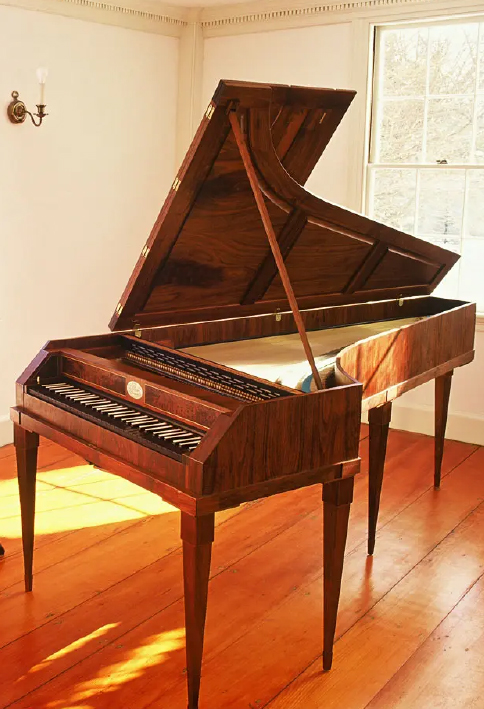
A harpsichord is a musical instrument played by means of a keyboard. Unlike a fortepiano or modern piano that users hammers to strike strings, the keyboard on a harpsichord activates a row of levers that turn a trigger mechanism that plucks the strings with a small plectrum made from quill or plastic. The strings are under tension on a soundboard, which is mounted in a wooden case. The soundboard amplifies the vibrations from the strings so that the listeners can hear it.
On a modern piano it is possible to play louder or quieter by playing the keys with more or less force. On a harpsichord the volume (playing louder or softer) cannot be controlled by the way it is played. However, some large harpsichords have several “stops”, each one giving a different kind of sound. The largest harpsichords have two manuals (keyboards) which gives more variety. It makes it possible for the right hand to play the tune on one manual while the left hand plays an accompaniment more quietly on the other.
While many harpsichords have one string per note, more elaborate harpsichords can have two or more strings for each note. When there are multiple strings for each note, these additional strings are called “choirs” of strings. This provides two advantages: the ability to vary volume and ability to vary tonal quality.
The great bulk of the standard repertoire for the harpsichord was written during its first historical flowering, the Renaissance and Baroque eras. The first music written specifically for solo harpsichord was published around the early 16th century. Composers who wrote solo harpsichord music were numerous during the whole Baroque era in European countries including Italy, Germany, England and France.
At the St. Ann’s Kennebunkport 2024 Concerts Ian Watson will perform on an authentic harpsichord reproduction crafted in Freeport Maine by famous American keyboard maker, R. J. Regier.
Source: Wikipedia